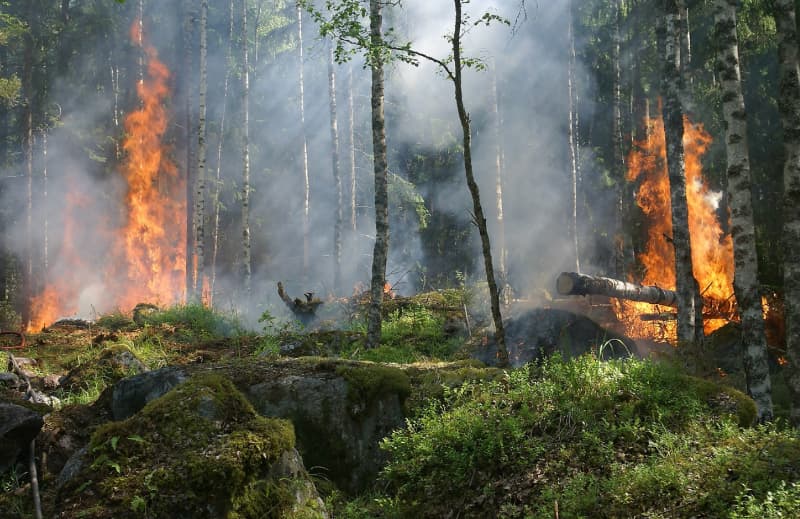Colorado looking to catastrophe bonds for wildfire risk transfer

- Building bonds beyond the badge
- Indian Bond Yields Edge Up Following US Treasury Trends
- DP World introduces “first-ever” blue bond in MENA region
- Ferrovial Extends Buyback While Sabadell Repays Mortgage Bonds Early
- DOGE Co-Chief Vivek Ramaswamy’s Strive Files With the SEC for First-Ever Bitcoin Bond ETF
According to reports, the US state of Colorado is exploring whether catastrophe bonds may be a suitable risk transfer mechanism to help it deal with growing wildfire related risks and address insurance affordability.
Like many parts of the United States, Colorado has been dealing with rising losses and costs from extreme weather and natural events, from storms through wildfires.
Bạn đang xem: Colorado looking to catastrophe bonds for wildfire risk transfer
At the same time, insurance affordability has declined, due to rising rates and reduced availability in some areas badly affected by natural disasters and weather events.
As a result and like many other US states, Colorado has been exploring ways it can reduce the pressure on its homeowners and businesses, while encouraging more insurance risk capital to deploy there.
Part of this has been through initiatives such as the recent launch of the state’s first FAIR Plan, effectively an insurer of last resort for homeowners and businesses in Colorado.
The fourth-quarter 2021 Marshall Fire was a turning point for Colorado and its lawmakers, driving a concerted effort to increase access to insurance in the wake of that costly disaster, while looking at the legislature for ways to provide broader access to risk capital.
Xem thêm : A-State bonds receive A1 rating from Moody’s
The FAIR Plan is only accessible by homeowners that have been rejected by at least three insurers, while there are coverage caps in-force for residential and commercial properties included.
But Colorado is also looking for ways to further spread out risk and considering mechanisms that would see state entities aggregating and pooling risk to then distribute it through different mechanisms, in a hope of achieving more risk capital efficiency.
State Representative Kyle Brown is one of the lawmakers pushing for more meaningful reform to drive access to risk capital that could support the insurance needs of those in Colorado.
One plan would involve catastrophe bonds, with a bill mooted that would see a state entity utilising cat bonds to crowd in institutional money to offset costs of major wildfire events.
The idea would be to use that as a further layer of financial protection, with a goal of stabilising insurance premiums after catastrophic wildfire events and help keep coverage more affordable when the worst events occur, it seems.
The state is also pushing for measures similar to those seen in California, such as mitigation efforts, and wildfire models that take into account fire prevention work undertaken, to provide more accurate premiums.
Xem thêm : Record $600B Inflows Signal a Major Investment Shift
Colorado’s experience is being repeated almost nationwide, with insurance and reinsurance capital struggling to make a profit in heavily catastrophe and severe weather exposed regions.
The catastrophe bond market could be an option for sourcing diversifying, incremental and efficient risk capital, but it will not be able to supply that at any cost and there is no guarantee it would have the appetite to assume peak wildfire risk, that being now a relatively small piece of the outstanding cat bond market.
Colorado is doing many of the right things though, by looking at the state’s insurance problem through an affordability and availability lens.
It will take a concerted effort across many avenues, from modelling, to mitigation and prevention, to risk capital, to drive forward solutions that can help insurers be more productive there and support them to do more in the state, while securing the much-needed reinsurance capital, in whatever forms are most efficient (be that cat bonds or traditional).
There is definitely something to be said for aggregating and pooling some of the wildfire property risks that cannot be directly insured as easily, or affordably. Then working to find the best ways to retain and transfer the appropriate amounts, to markets that have the right appetite to assume them, be that reinsurance or capital markets.
It’s a model followed elsewhere, for other perils and while wildfire risks can be especially challenging to find capital with an appetite right now, structured in the right way and at the right return-period there is most always some appetite for at least some of the pooled risk.
Nguồn: https://linegraph.boats
Danh mục: News

